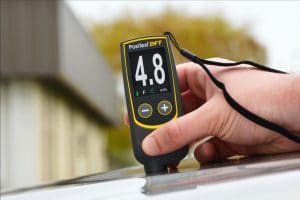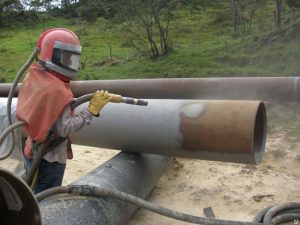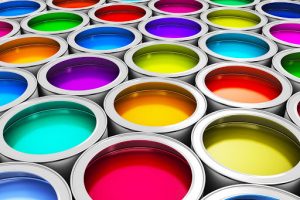Chemical cleaning / Pickling / Passivation / Inspection of equipment and piping networks performed to clear all metal surfaces of chemical or physical pollution (inclusions, fatty matter, welding waste, pitting, slag and sand, oxides, etc.) liable to affect installation or contaminate the fluids conveyed.
It involves:
- surface cleaning (degreasing, pickling),
- conditioning (passivation, neutralization, and drying) and
- conservation procedures.
The treatments may be performed for carbon steels, stainless steels, copper, and aluminum alloys.
The treatments must be suited to the grades, size, and geometry of the items treated.
Pickling is a metal surface treatment used to remove impurities, such as stains, inorganic contaminants, rust or scale from ferrous metals, copper, and aluminum alloys. A solution called pickle liquor, which contains strong acids, is used to remove the surface impurities. It is commonly used to descale or clean steel in various steelmaking processes.
- Pickling is a metal surface cleaning process from scales or corrosion products using an acid solution.
- The pickling process involves an inhibitor to protect the base metal from the acid solution using.
Example pickling application:
- Material Name: Duplex Stainless Steel, equipment: Cup brush (CAS-31 Stainless Steel Wire), paintbrush, Nikko steel (NS – Stainclean), Hardener (UT-R-20)
- Material Name: SS 304, inhibitor: Quinoline (C9H7N), pickling solution (Larutan pickling): HCl
Passivation, in physical chemistry and engineering, refers to a material becoming “passive,” that is, being less affected by environmental factors such as air and water. Passivation involves a shielding outer-layer of the base material, which can be applied as a micro coating, or which occurs spontaneously in nature. As a technique, passivation is the use of a light coat of protective material, such as metal oxide, to create a shell against corrosion. The technique of passivation is used to strengthen and preserve the appearance of metallics.
Notes:
- The term passivation is commonly applied to several distinctly different operations or processes relating to stainless steel. In order to avoid ambiguity in the setting of requirements, it may be necessary for the purchaser to define precisely the intended meaning of passivation.
- The pipework requiring chemical cleaning will be indicated on the Piping and Instrument Diagrams and Piping Isometrics and shall be cleaned in accordance with Client (COMPANY) Requirements/specifications.
- Chemical cleaning shall generally be carried out after hydrostatic testing.
- All pre-cleaned equipment such a filters/strainers shall be removed.
- All connections to operating mechanisms such as instruments, pumps, compressors, etc, shall be disconnected and a temporary by-pass installed to allow continuous circulation.
- Any pipe fittings or other components that are removed prior to cleaning should be carefully inspected for cleanliness and protection.
- Temporary piping shall be installed as necessary to complete the piping systems being cleaned.
- Exposed threads and machined surfaces shall be masked and protected from the pickling chemicals.
THE PICKLING process CHEMICAL SOLUTIONS
Before use, the pickling process solutions must satisfy the requirements in respect of their chemical composition and the presence of contaminants.
The products recommended by the EPCI CONTRACTOR must satisfy the Client’s (COMPANY) requirements and any additional requirements concerning the safety of personnel and equipment and protection of the environment.
These are solutions to be used, e.g. :
- ESAB StainClean Pickling Gel
- Stainless Steel Pickling Gel Nikko Steel
- Taseto New Bright #300E Pickling paste/liquid
- Sandvik’s pickling and passivating pastes
ESAB StainClean Pickling Gel
StainClean pickling paste is used for cleaning and passivating of welding joints and the heat-affected zone (HAZ) for welded stainless steel constructions. Pickling paste is applied with a paintbrush. After pickling and generous flushing with water (high pressure), the corrosion resistance of the weld site is restored.
StainClean has an extraordinary good adhesive capacity and can be applied on vertical surfaces and ceilings without any risk of running or drying.
Stainclean Green pickling paste is a pickling paste with an entirely new formula. The paste is virtually free from the formation of toxic, nitric gases.
NOTE: All Stainclean products are toxic and corrosive
TASETO NEW BRIGHT (Pickling Acid)
TASETO NEW BRIGHT is a one-liquid pickling acid and removes oxide scales produced during welding and heat treatments of stainless steel without wearing off any of the austenitic matrix.
● Applicable materials
Austenitic stainless steel:SUS304, 304L, 32l, 316, 316L, 30l, 302, 309S, 310S, 347, 309, 310 , 330.
Duplex stainless steel :S31803,TP2205,TP2507
● Types
TASETO NEW BRIGHT #300E High adhesion coating type
Sandvik’s pickling process and passivating pastes
Sandvik provides two types of pickling paste for cleaning and passivating of welding joints and the heat-affected zone (HAZ) in welded stainless steel constructions.
CHEMICAL CLEANING OF STAINLESS STEEL PIPES
Stainless steel pipes and other components are normally supplied pickled and passivated.
Welding if well inerted should not produce surface state which would require further pickling and passivation.
This operation shall be carried out as per the following steps:
- Degreasing is generally not necessary except if the quantity of grease is too important and cannot be removed by hand.
- Rinsing shall be carried out with clean water and hosepipe.
- Cold pickling (at ambient temperature)
- Rinsing shall be carried out with clean water and hosepipe.
- Passivation, If required, passivation shall be carried out as per ASTM A 967 in an oxidizing (nitric) medium containing less than 5 g/l total dissolved iron.
- Final Rinsing shall be carried out with clean water and hosepipe
- Blowing, drain all low points if any, and dry the network with compressed air to remove water traces.
- Oil flushing,
CHEMICAL CLEANING OF EXTERNAL SURFACE OF STAINLESS STEEL COMPONENTS
The external surface of stainless steel piping or equipment in which has been polluted during fabrication shall be mechanically or chemically cleaned. Traces of contamination shall be removed using methods described below.
- Mechanical cleaning: Oxidation may be removed by mechanical means. The surface shall be polished with a grinder and a smooth transition to the unpolished base material surface shall be made. The final surface roughness, Ra, shall be less than 12.5 micrometers. (See Client Requirements/specifications).
- Pickling and passivation using liquids: Pickling and passivation shall be carried out in accordance with Client Requirements/specifications.
- Pickling and passivation using pastes: Pickling and passivation using pastes shall only be used on the outside of piping or equipment. Pastes shall be specifically produced for the purpose of oxidation removal and shall contain no halogens. Any residuals of such pastes shall be removed after cleaning by washing with copious quantities of freshwater. Such pastes shall be used in accordance with the recommendations of the paste supplier.
SAFETY: Staff protection
Elementary protections have to be taken by the people involved in the chemical cleaning operations.
Prior to starting the pickling activity, the area shall be barricaded and ensure all personnel involved shall wear the proper PPE as per the MSDS (Material Safety Data Sheets).
They must wear some safety equipment such as gloves, boots, aprons, and goggles.
They must read MSDS prior to working.
The working area shall have adequate ventilation and access.
Safety procedure and equipment shall be established in case of splitting: on the skin or in the eyes.
In any case, see a doctor.
QUALITY CONTROL: Pickling process & Passivation Inspection
All work and materials shall be subject to inspection and carried out to the satisfaction of the Contractor and the Independent Inspection Authority. QC Inspector shall perform the inspection before, during, and after pickling cleaning.
- During cleaning: If chemical cleaning is carried out, the cleaning solution shall be tested for inhibitor effectiveness prior to its introduction to the relevant system.
- Inspection after cleaning: Visual inspection shall be made at all accessible points to assess the degree of cleanliness achieved. Lube oil, seal oil, and control oil systems shall be inspected as noted in API Std 614.
Inspections and Acceptance shall be carried out in the presence of a representative of the Client / OWNER.
Acceptance checks
Acceptance checks shall be based on Cleanliness tests, Passivity or decontamination tests, and Inhibition effectiveness inspection.
These are mainly:
- Visual tests
- White rag tests
- Wood lamp test
- Water film test
- Ferricyanide test
- pH monitoring Test (by litmus paper or pH indicator)
Acceptance criteria:
- Visual examination: The surface must be totally free of corrosion products and foreign bodies.
- Wood lamp test: The test must not reveal the presence of fatty matter.
- White rag test: In the case of stainless steel alloys, the rag must remain clean.
- Water film test: Any discontinuity in the film caused by the presence of fatty matter shall be unacceptable.
- Ferricyanide test: No blue coloration should appear on the surface being examined within 15 seconds of application.
- Corrosion: The inhibition inspection is based on observation of the surface condition of a coupon placed inside the reactive medium. Measurements by weight may be used to supplement these observations.
- Steel wool pad: The inhibition inspection is based on immersing a pad of steel wool in the medium. Salting out of the pad on the surface of the solution indicates an inhibition fault.
Notes:
After pickling cleaning, Company’s representative and/or inspector shall examine and declare free any visible deposits of oils, grease, or other contaminants on the surface. If any of them are present, pickling cleaning shall be re-performed.
PRESERVATION OF CLEANED SYSTEMS:
Generally, cleaned systems shall be blanked off by metal closures until required for commissioning.
Upon acceptance of pickling, the pipes/line shall be protected by plastic wrapping to avoid further contamination.
ENVIRONMENTAL: Waste products
Pickling sludge is the waste product from pickling and includes acidic rinse waters, iron chlorides, and metallic salts and waste acid. Spent pickle liquor is considered a hazardous waste by the EPA. Pickle sludge from steel processes is usually neutralized with lime and disposed of in a landfill. After neutralization, the EPA no longer deems it a hazardous waste. The lime neutralization process raises the pH of the spent acid. The waste material is subject to a waste determination to ensure no characteristic or listed waste is present.
The United States Environmental Protection Agency (EPA or sometimes USEPA) is an agency of the U.S. federal government which was created for the purpose of protecting human health and the environment by writing and enforcing regulations based on laws passed by Congress. The EPA was proposed by President Richard Nixon and began operation on December 2, 1970, after Nixon signed an executive order. The EPA has its headquarters in Washington, D.C., regional offices for each of the agency’s ten regions, and 27 laboratories. The agency conducts environmental assessment, research, and education.
TREATMENT AND DISPOSAL OF WASTE PRODUCTS (Online Coatings)
For the wastewater treatment, before pickling activity started, the wastewater collector drum shall be prepared properly.
After cleaning, the water shall adequate to flow on the collection of waste.
The treatment and/or disposal of waste products shall be the responsibility of the CONTRACTOR with all due respect for current regulations.
DOCUMENTATION:
- Pickling & Passivation Procedure
- Pickling & Passivation Reports
- MSDS
- Material technical data
The Contractor shall maintain a complete and accurate record of all spools, or systems, which have been flushed.
On completion of any chemical cleaning, a COMPLETION CERTIFICATE shall be submitted to Client/COMPANY for review and approval.
HTS COATINGS / HARVISH TECHNICAL SERVICES / ONLINE COATINGS






38 thoughts on “CHEMICAL CLEANING: PICKLING & PASSIVATION INSPECTION”
Pingback: buy tadalafil 20mg price
Pingback: highest dose of cymbalta
Pingback: metronidazole fart
Pingback: how much does escitalopram cost without insurance
Pingback: lexapro sexual side effects female
Pingback: can duloxetine get you high reddit
Pingback: generic sildenafil tablets
Pingback: cephalexin penicillin allergy
Pingback: 800 mg neurontin
Pingback: effexor for ocd
Pingback: discount coupon for flomax
Pingback: lowest effective dose of citalopram for anxiety
Pingback: augmentin for tooth infection
Pingback: ezetimibe dissolution media
Pingback: does flexeril show up on drug tests
Pingback: cozaar brand name
Pingback: buy contrave online nz
Pingback: diltiazem calcium channel blocker
Pingback: how much does ddavp cost without insurance
Pingback: depakote toxicity symptoms
Pingback: what is diclofenac for
Pingback: allopurinol during gout attack
Pingback: amitriptyline ibs
Pingback: aripiprazole moa
Pingback: is aspirin acetaminophen
Pingback: naltrexone and bupropion
Pingback: how long does it take for buspar to work
Pingback: actos medicamento
Pingback: protonix otc
Pingback: semaglutide drug class
Pingback: acarbose gamma
Pingback: tamsulosin ejakulationsstörung
Pingback: repaglinide polymorphism
Pingback: synthroid germany
Pingback: stromectol 3 mg dosage
Pingback: abilify and tardive dyskinesia
Pingback: oral minoxidil and spironolactone
Pingback: how to wean off venlafaxine